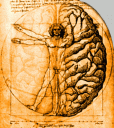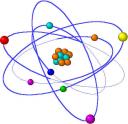Software for Quitters
Tuesday, May 26th, 2009 Design for behavior change is a hot topic. And it should be. Nearly everyone looks to rid themselves of some unwanted behaviors. Products and services that promise to change health or money related habits are a multi-billion dollar industry. For the most part they don’t work as the engineers and designers that develop them fail to draw on the science of behavior change.
Design for behavior change is a hot topic. And it should be. Nearly everyone looks to rid themselves of some unwanted behaviors. Products and services that promise to change health or money related habits are a multi-billion dollar industry. For the most part they don’t work as the engineers and designers that develop them fail to draw on the science of behavior change.
As a cognitive designer I am always on the look out for scientific insights into how to change behaviors while respecting individual autonomy. That’s why the recently published meta-analysis of the effects of web- and computer-based smoking cessation programmes caught my eye.
EurekAlert! news service has a nice summary of the study and reports for example,
“When the results of the trials were pooled and analyzed, individuals assigned to use computer- or Web-based programs were about 1.5 times more likely to quit smoking than those assigned to control groups. “
The evidence supports including software as a feature/function in the design of behavior change products and services.








